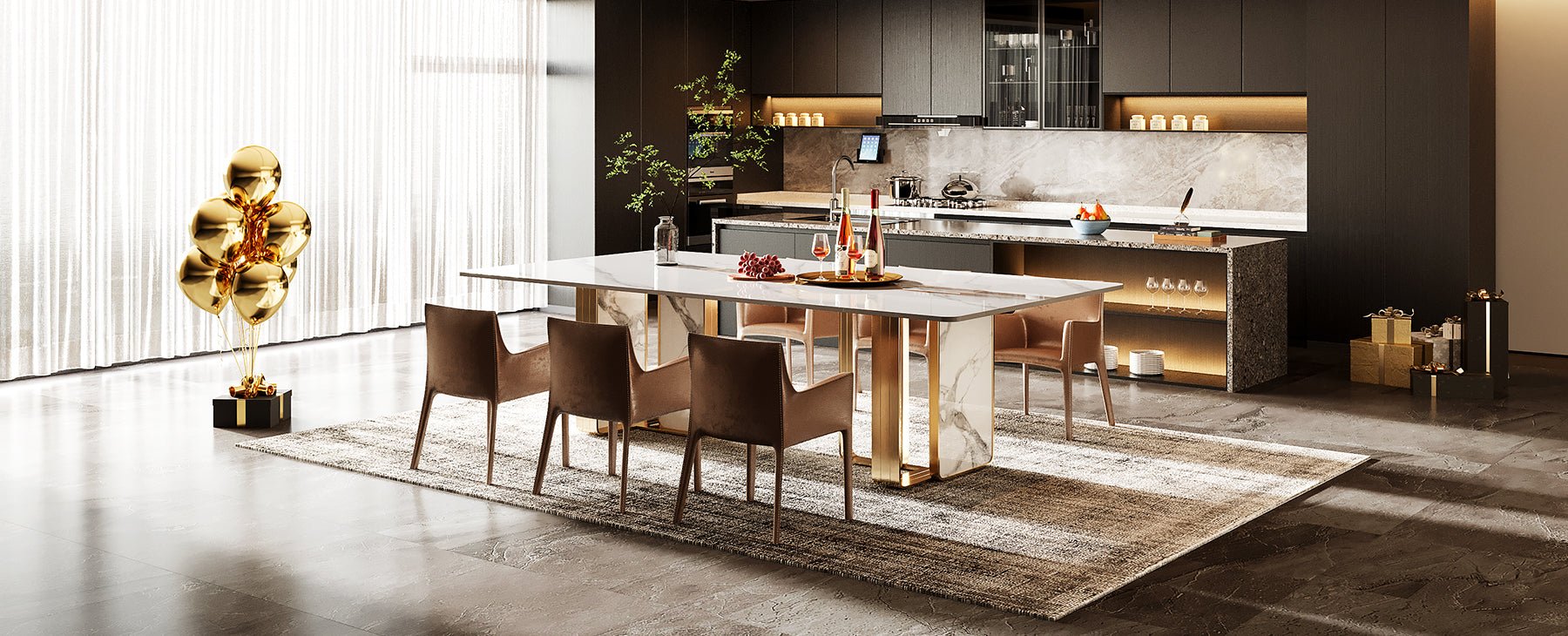Have you ever stumbled upon a material that offers the strength of granite, the elegance of marble, yet surpasses them in every aspect? That's sintered stone for you.
However, the primary downside is its cost. The production process makes it more expensive than other materials like quartz, granite, or wood. It can also be rather heavy, requiring several individuals to assemble. While it is very hard, it can chip or crack if hit with significant force, and repairing such damages may be challenging and expensive.
In conclusion, the sintered stone is a practical and attractive option for those seeking longevity, elegance, and easy maintenance. Though the initial cost might be higher, the value over time speaks for itself. With Tribesigns Sintered Stone Dining Tables, we bring this value directly to your kitchen or dining room.
What Is Sintered Stone?
Sintered stone is a sought-after material suitable for a variety of applications - countertops and dining tables being popular choices. Resulted from an advanced process, sintered stone combines natural minerals under intense heat and pressure, producing an extremely robust and visually pleasing surface. Essentially, sintered stone provides a strong, chemical binder-free and silica-free alternative to quartz, offering unmatched durability. The material's consolidation process creates a uniform, compact matrix through vibration, compression, and heat, forming a full-bodied slab with unparalleled performance attributes.Sintered Stone Pricing: A Worthwhile Investment
Sintered stone pricing largely depends on factors like color, thickness, and the manufacturer, typically ranging from $60 to $100 per square foot. Though this might appear to be a significant investment compared to granite or marble, sintered stone outshines these alternatives due to its longer lifespan and minimal maintenance requirements.Why Choose Sintered Stone?
The unique durability, appeal, and functionality of sintered stone make it a wise option. It withstands heat, scratches, ultraviolet rays, and its non-porous surface repels stains and bacteria, making it a blessing for hygiene-conscious households. Its style versatility, with a wide range of natural textures, grants freedom to match it with varied aesthetics. Hence, at Tribesigns, we have incorporated this premium material into our newly developed product line, the Collection of Luxury Sintered Stone Dining Tables. For more details, see the dedicated page for Tribesigns Sintered Stone Dining Tables.Pros and Cons of Sintered Stone
Sintered stone is highly durable, resistant to scratches, high temperatures, stains, and ultraviolet rays, making it ideal for heavy-use areas like countertops. It's a hygienic, non-porous material that doesn't allow bacteria or mold growth. Additionally, it's available in a wide array of textures, colors, and patterns, giving designers a broad spectrum of options to match any aesthetic preference.However, the primary downside is its cost. The production process makes it more expensive than other materials like quartz, granite, or wood. It can also be rather heavy, requiring several individuals to assemble. While it is very hard, it can chip or crack if hit with significant force, and repairing such damages may be challenging and expensive.
Maintenance and Care for Sintered Stone
Maintaining the beauty of your sintered stone surfaces is quite simple. Due to its durability and stain resistance, a wipe with a damp cloth and gentle detergent will effectively clean the surface. For stubborn spills, a non-abrasive cleaner can be used. Proper cleaning and a simple annual sealing will help your sintered stone surfaces look beautiful for years.In conclusion, the sintered stone is a practical and attractive option for those seeking longevity, elegance, and easy maintenance. Though the initial cost might be higher, the value over time speaks for itself. With Tribesigns Sintered Stone Dining Tables, we bring this value directly to your kitchen or dining room.



